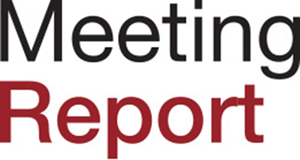The year of 2020 was a special one that we will all remember. The coronavirus outbreak upended operations and activities across nearly all parts of the world. While other major professional societies chose to shut down their meetings in March and April, fortunately we were able to quickly realign the Microscopy & Microanalysis 2020 (M&M 2020) task force and gained the support of the Microscopy Society of America and the Microanalysis Society (MSA/MAS) society leaders and council members to turn our annual M&M meeting into a virtual event. But, we faced a particularly daunting challenge. While all of us wanted to have a meeting as interactive and even more awesome than an in-person one, we could not necessarily “plop and drop” what we had done for an in-person into the virtual world. We were forced to reinvent nearly every aspect of the event, including shifting in-person presentations to remote platforms and recreating the social environment where people could randomly bump into each other. Given the short period of time to prepare for the meeting and limited resources, we finally settled on having pre-recorded talks threaded with live discussions and social events.
With the effort of the entire task force, the M&M 2020 meeting was successfully held online from August 4–7, and the meeting materials, including talks and recorded Q&A sessions, were available for viewing for one month after the meeting. The meeting hosted 2,990 online attendees (2,490 scientific participants and 500 exhibitors) from around the world and featured 692 pre-recorded platform presentations and 451 posters. The M&M Expo Exhibition virtually showcased state-of-the-art instruments, microscopy support equipment, and specialized services. There were two very well-attended virtual pre-meeting congresses. On Saturday the fourth annual “X60 – Annual Pre-Meeting Congress for Students, Post-Docs, and Early Career Professionals in Microscopy & Microanalysis” was hosted by the MSA Student Council (
Figure 1). The second pre-meeting event, “X61 – Current Status and Horizons of Electron Microscopy in Liquids and Gases,” took place on Sunday and was sponsored by the Electron Microscopy in Liquids and Gases Focused Interest Group.

Figure 1
The opening plenary session featured two renowned scientists, Drs. Maria McNamara and Yi Cui, who presented truly inspirational talks on their achievements. First, Dr. McNamara (University College Cork, Ireland) presented her work, “Melanin Through Deep Time: Experimental and Analytical Approaches to Decoding the Fossil Record of Melanin.” Dr. McNamara addressed the application of analytical and experimental approaches to understanding the preservation of soft tissues in fossils in order to constrain interpretations of fossil anatomy, chemistry, and taxonomy (
Figure 2). In his plenary address, “In-situ and Cryogenic Electron Microscopy for Energy Materials,” Dr. Cui discussed challenges associated with the latest developments in the lithium-ion battery field and showcased that cryo-EM will be a significant addition to the energy materials characterization and function tool chest (
Figure 3).

Figure 2

Figure 3
The technical program of the meeting consisted of 38 symposia covering several topics in the biological, physical, and analytical sciences. One of the highlights of the meeting was symposium A01 “Advances in Modeling, Simulation, and Artificial Intelligence (AI) in Microscopy and Microanalysis for Physical and Biological Systems.” In a very timely series of talks, this symposium featured the latest developments in the fusion of AI technology with microscopy and microanalysis.
Social aspects of the meeting included a large number of activities, with the Student Mixer and Postdoctoral and other Networking rooms successfully helping the younger generation of microscopists connect with established and senior scientists in the field (Figures 4–8). Another highlight of the meeting was the opportunity for the students to meet Dr. Ondrej Krivanek, a Kavli Prize winner for his work in sub-ångström resolution imaging and chemical analysis using electron beams (
Figure 9).

Figure 4

Figure 5

Figure 6

Figure 7

Figure 8

Figure 9
When preparing for the virtual conference, our goal was to create a meeting that was as close to an in-person meeting as we could possibly have. In retrospect, there were many details that could have been improved; but I can proudly say that M&M 2020, the first virtual meeting in the long history of MSA and EMSA, with its compelling program and online networking events, was a great success. If we need to have another virtual meeting, we hope to improve upon M&M 2020 and repeat the success. Meanwhile, let's look forward to and hope for an on-site M&M 2021 in Pittsburgh, PA, August 1–5, 2021.












